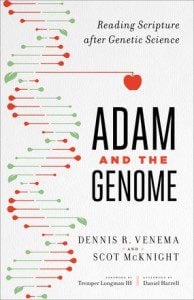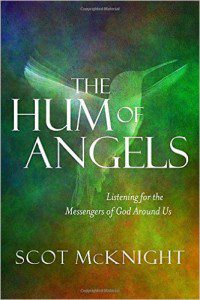Not Chicago
Reviews that missed the mark. “Many pioneering artists have endured abuse from critics and naysayers. But once in a blue moon, time brings acceptance and acclaim, making those early detractors look silly to future generations. Check out how the following works—whose ‘classic’ status now seems self-evident—were once butchered by the Simon Cowells of yesteryear.”
 What say you? “Washington (CNN) – Liberty University students and alumni are accusing the Christian school of violating its own teachings by asking Republican presidential candidate Mitt Romney, a member of the Church of Jesus Christ of Latter-day Saints whose adherents are called Mormons, to deliver its 2012 commencement address. By Friday morning, more than 700 comments had been posted on the school’s Facebook page about the Thursday announcement – a majority of them decidedly against the Chancellor Jerry Falwell Jr.’s invitation, citing that the school had taught them Mormonism isn’t part of the Christian faith.”
What say you? “Washington (CNN) – Liberty University students and alumni are accusing the Christian school of violating its own teachings by asking Republican presidential candidate Mitt Romney, a member of the Church of Jesus Christ of Latter-day Saints whose adherents are called Mormons, to deliver its 2012 commencement address. By Friday morning, more than 700 comments had been posted on the school’s Facebook page about the Thursday announcement – a majority of them decidedly against the Chancellor Jerry Falwell Jr.’s invitation, citing that the school had taught them Mormonism isn’t part of the Christian faith.”
Roger Olson compares the emerging movement and the Jesus People movement. J.K.A. Smith on Pete Enns on Adam and Eve, and J.R. Daniel Kirk on J.K.A. Smith on Pete Enns on Adam and Eve.
Writing with the lighting … opening post by Ryan. I like his emphasis on humans as co-creators.
Frank Viola proposes a solution to “thorn in the flesh”: what do you think?
The 13 Most Useless College Majors. Students, don’t listen to this kind of stuff… spread your net widely, but let your passions and calling shape your Major.
Kent Annan: “The initial Kony 2012 video bent some of these Golden Rule principles for communicating—but was made out of love and commitment to people who are suffering. In that way, the video is a bit like all of us: good, flawed, a mix of sinner and saint. Perhaps these principles can lead to conversations with the people you tell stories about. Are they okay with how you’re telling their stories? What is the most respectful approach that can build trust? Do they understand where you’ll tell the stories and what kind of action is being invited? This open exchange can actually become part of the story of justice we’re trying to achieve together. And that’s a story worth living.”
William Lane Craig responds to Stephen Law’s criticisms of the existence of Jesus. Some apologists will really like this piece by Richard Carrier, who tears into Bart Erhman.
There’s a dustup among the Reformed again, this time John Frame vs. “Escondido” theology. Here is Michael Horton’s response …
Meanderings in the News
A satire on the death of facts by Rex W. Huppke: “A quick review of the long and illustrious career of Facts reveals some of the world’s most cherished absolutes: Gravity makes things fall down; 2 + 2 = 4; the sky is blue. But for many, Facts’ most memorable moments came in simple day-to-day realities, from a child’s certainty of its mother’s love to the comforting knowledge that a favorite television show would start promptly at 8 p.m. Over the centuries, Facts became such a prevalent part of most people’s lives that Irish philosopher Edmund Burke once said: “Facts are to the mind what food is to the body.” To the shock of most sentient beings, Facts died Wednesday, April 18, after a long battle for relevancy with the 24-hour news cycle, blogs and the Internet. Though few expected Facts to pull out of its years-long downward spiral, the official cause of death was from injuries suffered last week when Florida Republican Rep. Allen West steadfastly declared that as many as 81 of his fellow members of theU.S. House of Representatives are communists.”
 College graduate and employment: “WASHINGTON (AP) – The U.S. college class of 2012 is in for a rude welcome to the world of work. A weak labor market already has left half of young college graduates either jobless or underemployed in positions that don’t fully use their skills and knowledge. Young adults with bachelor’s degrees are increasingly scraping by in lower-wage jobs — waiter or waitress, bartender, retail clerk or receptionist, for example — and that’s confounding their hopes a degree would pay off despite higher tuition and mounting student loans. An analysis of government data conducted for the Associated Press lays bare the highly uneven prospects for holders of bachelor’s degrees. Opportunities for college graduates vary widely. While there’s strong demand in science, education and health fields, arts and humanities flounder. Median wages for those with bachelor’s degrees are down from 2000, hit by technological changes that are eliminating midlevel jobs such as bank tellers. Most future job openings are projected to be in lower-skilled positions such as home health aides, who can provide personalized attention as the U.S. population ages. Taking underemployment into consideration, the job prospects for bachelor’s degree holders fell last year to the lowest level in more than a decade.” The numbers look like this: ” About 1.5 million, or 53.6%, of bachelor’s degree-holders under the age of 25 last year were jobless or underemployed, the highest share in at least 11 years. In 2000, the share was at a low of 41%, before the dot-com bust erased job gains for college graduates in the telecommunications and IT fields. Out of the 1.5 million who languished in the job market, about half were underemployed, an increase from the previous year.”
College graduate and employment: “WASHINGTON (AP) – The U.S. college class of 2012 is in for a rude welcome to the world of work. A weak labor market already has left half of young college graduates either jobless or underemployed in positions that don’t fully use their skills and knowledge. Young adults with bachelor’s degrees are increasingly scraping by in lower-wage jobs — waiter or waitress, bartender, retail clerk or receptionist, for example — and that’s confounding their hopes a degree would pay off despite higher tuition and mounting student loans. An analysis of government data conducted for the Associated Press lays bare the highly uneven prospects for holders of bachelor’s degrees. Opportunities for college graduates vary widely. While there’s strong demand in science, education and health fields, arts and humanities flounder. Median wages for those with bachelor’s degrees are down from 2000, hit by technological changes that are eliminating midlevel jobs such as bank tellers. Most future job openings are projected to be in lower-skilled positions such as home health aides, who can provide personalized attention as the U.S. population ages. Taking underemployment into consideration, the job prospects for bachelor’s degree holders fell last year to the lowest level in more than a decade.” The numbers look like this: ” About 1.5 million, or 53.6%, of bachelor’s degree-holders under the age of 25 last year were jobless or underemployed, the highest share in at least 11 years. In 2000, the share was at a low of 41%, before the dot-com bust erased job gains for college graduates in the telecommunications and IT fields. Out of the 1.5 million who languished in the job market, about half were underemployed, an increase from the previous year.”
Graduated tuition prices: “A growing number of public universities are charging higher tuition for math, science and business programs, which they argue cost more to teach — and can earn grads higher-paying jobs. More than 140 public universities now use “differential tuition” plans, up 19% since 2006, according to research from Cornell’s Higher Education Research Institute. That number is increasing as states cut higher-education spending and schools try to pay for expensive technical programs.”
Better news: “And Mr. Parthasarathi’s story is not an isolated one: In recent years, New York’s colleges and universities have ratcheted up their commitment to supporting budding entrepreneurs. With courses, mentoring, networking and cash awards, they are growing crops of would-be entrepreneurs that they say are far better prepared than their predecessors. One of the latest manifestations of the trend: the February launch, by Pace University’s Lubin School of Business, of an entrepreneurship lab that aims to facilitate collaborations between students in schools as diverse as nursing and business. “The idea is that it will involve all Pace students and faculty from all the schools,” said Bruce Bachenheimer, director of the lab and of Lubin’s entrepreneurship program. “We’re stressing an interdisciplinary, hands-on experience to find new ways to solve difficult problems.”
John Naughton continues the academic journal controversy: “As one of the characters in George Bernard Shaw’s play The Doctor’s Dilemma observes: “All professions are conspiracies against the laity.” To update the observation for a contemporary audience, simply replace the term “professions” with “publishers of academic journals” and you’ve got it in one. For, without the knowledge of the general public, a racket of monumental proportions has been milking the taxpayer for decades. It works like this. If you’re a researcher in any academic discipline, your reputation and career prospects are largely determined by your publications in journals of mind-bending specialisation – likeTetrahedron, a journal specialising in organic chemistry and published by the Dutch company Elsevier. Everything that appears in such journals is peer-reviewed – that is to say, vetted by at least two experts in the field. This is the main quality-assurance mechanism used in scientific research, and it’s what sets scholarly publication apart from most other forms of publishing.”
Apart from the fact that no monasteries are 4000 yrs old, here’s an interesting little clip: “Welcome to the place where the language in which Jesus Christ spoke is still alive,” Sister Georgette, clad in black robes, told this visiting IANS correspondent, ushering us into the Convent of St. Serge, a 4,000-year-old monastery that sits atop a rock cliff 5,000 feet above sea level. Inside the elegantly restored Byzantine interiors are icons of Christ, his face ennobled by suffering and redemptive suffering for mankind, and the Virgin Mary. In front of the altar, she recites “The Lord’s Prayer” in Aramaic. Malula is among three neighbouring villages where Aramaic is still spoken by around 18,000 inhabitants. The other two places which boast of a living linguistic connection with Christ are Bakhaa and Jabadeen.”
Monthly physician payments: “Family physician Steven Butdorf of Eugene, Ore., was tired of rushing patients through appointments, tired of insurers denying procedures, and tired of paperwork. “The burden of third-party health insurance reached a point where it just wasn’t fun to do it anymore. It was burdensome to do it,” said Butdorf, 56. “I just decided I was going to pursue a different path.” On Feb. 1, Butdorf opened Exceptional Health Care, which lets patients pay a set monthly fee in return for specific health care services — leaving out insurance companies altogether. The clinic is the first to be certified under a new Oregon law allowing so-called retainer practices. The law, which took effect Jan. 1, requires such practices to register with the state, but exempts them from insurance regulations.”
Casey Schwartz interviews Stuart Firestein on the value of ignorance: “In his new book, Ignorance, neuroscientist Stuart Firestein goes where most academics dare not venture. Firestein openly confesses that he and the rest of his field don’t really know that much, relatively speaking. And what’s more, knowing itself, he argues, is highly overrated. Firestein, who is chairman of the biology department at Columbia University, talks to The Daily Beast about the joy of turning our backs on certitude.”
Kevin Nelson, the brain, and spirituality: “Some people fear that when science explains how the brain participates in spiritual experience, science also simultaneously explains the experience away. This fear of science surprises me some ways. After all, faithful Christians believe in the divine inspiration of scriptures written by Matthew the disciple of Jesus. Yet, few seem troubled that when Matthew wrote the scripture he must have used the same portions of brain that we use for everyday language, the very regions you are using now. So too spiritual experience uses everyday portions of the brain, or other portions reserved for crisis. Of course science can’t explain everything about the brain, including spirituality. Beyond science’s boundaries we discover faith. When transcending science’s limits, we must keep in mind that like knowledge, faith too resides within the brain since nothing is known of experience outside the brain.”
Meanderings in Sports












